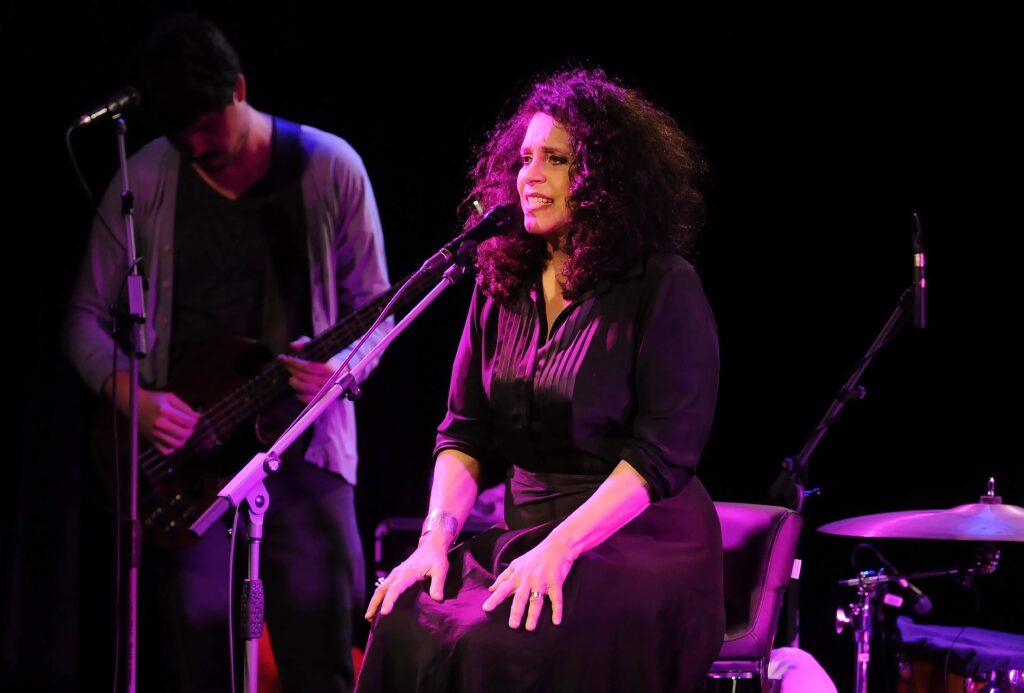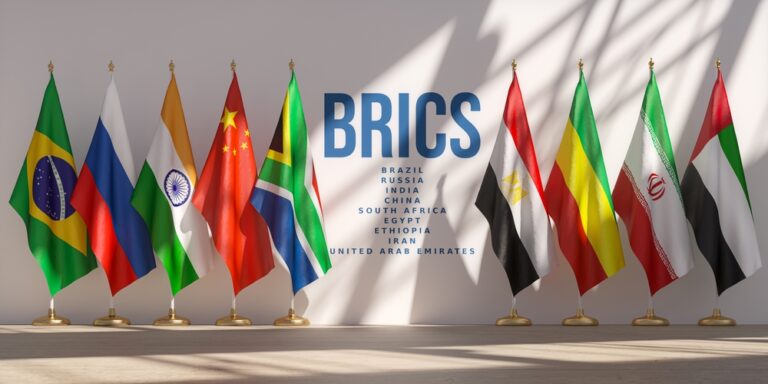Table of Content
ToggleIntroduction
Gal Costa, born as Maria da Graça Costa Penna Burgos, was a legendary Brazilian singer whose career in popular music spanned several decades. Born on September 26, 1945, she became a prominent figure in Brazil’s Tropicália movement during the 1960s, known for her distinctive and powerful voice. Costa’s contributions to Brazilian music and culture earned her a place among the country’s most respected and influential artists until her passing on November 9, 2022, at the age of 77 source.
The iconic artist’s career started in the mid-1960s when she teamed up with fellow Brazilian musicians to create a new sound that combined elements of various genres while challenging traditional cultural norms. The Tropicália movement, as it came to be known, defied the status quo by embracing experimentation and modernism, pushing the boundaries of what was considered acceptable in Brazilian music and society during that time [source] (https://www.npr.org/2022/11/09/1135562321/obituary-gal-costa-tropicalia).
Costa’s passionate performances and unique vocal style resonated across generations, as she continued to release albums and perform live throughout her storied career. Her work left an indelible impact on Brazilian popular music, and her passing was met with sadness and tributes from fans and fellow artists alike source.
Early Life
Gal Costa, born Maria da Graça Costa Penna Burgos, was born on September 26, 1945, in Salvador, the capital city of the Bahia state in Brazil. Her parents were Mariah Costa Penna and Arnaldo Burgos, and she was raised by her mother, since her father was absent during most of Gal’s childhood and adolescence, passing away when she was merely 14 years old1.
From a very early age, music played an important role in Gal Costa’s life. Her mother, Mariah Costa Penna, spent many hours listening to classical music while pregnant, hoping to nurture an interest in music in her unborn child2. Little did she know that her efforts would pay off, and that her daughter would grow up to become a prominent figure in Brazilian music.
Gal was raised in a humble family, in a lively, culturally rich environment, in the city of Salvador. The city is known for its vibrant music scene, which heavily influenced Costa’s development as an artist1. As a child, she was exposed to various genres of music, including the sounds of the Afro-Brazilian culture native to her home state of Bahia.
Growing up in Salvador, Gal Costa was able to absorb diverse musical influences, which would later become an integral part of her career. As one of Brazil’s most beloved artists, she played a key role in the Tropicália movement during the late 1960s3. The foundation for her illustrious career was laid during her early years, enabling her to become a true cultural icon.
Footnotes
Career
Beginning of Career
Gal Costa began her musical career in the early 1960s under her birth name, Maria da Graça. She was heavily influenced by João Gilberto, a bossa nova pioneer whom she first heard in 19591. In August 1964, she made her professional debut at the concert “Nós, por exemplo” in Vila Velha Theatre, where she performed alongside Caetano Veloso, Gilberto Gil, Maria Bethânia, and Tom Zé2.
Rise to Stardom
In the late 1960s, Costa became an important figure in the Tropicália movement, a revolutionary fusion of rock, Brazilian pop, and avant-garde music that challenged the country’s political and cultural norms. Costa collaborated with fellow Tropicália icons Veloso and Gil, as well as other prominent Brazilian musicians such as Chico Buarque, Milton Nascimento, and her sister Maria Bethânia3.
Her first album, “Domingo,” released in 1967, featured Gil, Veloso, and Tom Jobim, another bossa nova pioneer. This album laid the groundwork for her rise to fame and solidified her place in Brazilian music history. Costa went on to release several successful albums, incorporating various musical genres such as rock, disco, and Brazilian pop4.
Later Career
Throughout her career, Gal Costa continued to collaborate with an array of established artists, such as Antonio Carlos Jobim, Jorge Ben, and more recently, musicians like Rodrigo Amarante and Seu Jorge5. She was recognized with numerous awards, including the Latin Grammy Lifetime Achievement Award6, celebrating her impact on both Brazilian and international music scenes. Costa also performed at prominent music festivals such as Primavera Sound, further strengthening her influence and legacy.
In 2011, she released the album “Recanto,” produced by Caetano Veloso, reflecting on her lengthy career and addressing contemporary issues in Brazil, including the presidency of Lula da Silva7. Costa’s 2015 album “Nenhuma Dor” showcased her versatility with a mix of bossa nova, samba, and electronic music, earning critical acclaim8.
Throughout her illustrious career, Gal Costa remained an influential figure in the Brazilian music scene, contributing significantly to the Tropicália movement and shaping the landscape of Brazilian pop music for generations to come.
Footnotes
https://culturalmaya.com/gal-costa-origin-career-personal-life-death/ ↩
https://www.rollingstone.com/music/music-latin/gal-costa-dies-at-77-10-essential-songs-1234629083/ ↩
https://culturalmaya.com/gal-costa-origin-career-personal-life-death/ ↩
https://www.rollingstone.com/music/music-latin/gal-costa-dies-at-77-10-essential-songs-1234629083/ ↩
https://www.nbcnews.com/news/world/iconic-brazilian-singer-gal-costa-dies-77-rcna56487 ↩
https://culturalmaya.com/gal-costa-origin-career-personal-life-death/ ↩
https://culturalmaya.com/gal-costa-origin-career-personal-life-death/ ↩
Influences and Artistry
Gal Costa was a prominent figure in the Brazilian music scene, particularly as part of the Tropicália movement in the late 1960s. This countercultural movement heavily influenced the artistry of artists like Costa by blending elements of Brazilian popular music with other genres, including psychedelic rock and avant-garde styles.
Costa’s work throughout her career showcased a diverse range of musical styles and genres. In her early days, she contributed to the foundation of Tropicália with her rich voice and daring performances that often challenged the status quo. For example, her 1967 song “Coração Vagabundo” became a hallmark of the Tropicália style and was later included in the groundbreaking album “Tropicália: ou Panis et Circencis,” a collaborative effort that featured Costa alongside other icons of the movement such as Caetano Veloso and Gilberto Gil.
As Costa’s career progressed, she experimented with various musical styles, branching out from her Tropicália roots while still maintaining her signature sound and vocal ability. Some of her later work incorporated elements of bossa nova, psychedelia, and rock ‘n’ roll, such as her self-titled 1969 album, which is considered a landmark of Brazilian Tropicália. Costa’s ability to seamlessly fuse different musical genres in her work made her a highly influential and versatile artist in Brazilian popular music.
Throughout her career, Costa released several multi-platinum albums and continued to captivate audiences with her compelling stage presence. Her live performances often featured a mix of theatricality, flamboyance, and exceptional musicianship, as showcased in her famous 1981 performanceof “Meu Nome é Gal.” Costa also maintained her artistic relevance in the latter stages of her career, releasing new music and reinventing her image to stay in tune with the contemporary music scene.
In summary, Gal Costa’s artistry and influence can be attributed to her unwavering commitment to experimentation and blending different musical styles. Her work in the Tropicália movement and beyond significantly impacted Brazilian popular music and helped create a unique sound that resonated with audiences worldwide.
Controversy and Challenges
Gal Costa, a prominent figure in Brazilian music, faced numerous challenges throughout her career. As a key artist in the Tropicália movement during the late 1960s, Costa found herself amidst political turbulence caused by Brazil’s military dictatorship. The regime began persecuting musicians who advocated for freedom and opposed the government’s oppression, which undoubtedly affected Costa and her music.
An example of the difficulties she faced comes from her song “Que Pena,” which was co-written by fellow Tropicália artists Caetano Veloso and Jorge Ben. The song’s subversive lyrics, at a time when freedom of expression was stifled, put Costa at risk of censorship and government backlash. Despite the obstacles, her music continued to gain recognition and support from fans who identified with its message and artistic innovation.
Another controversial moment in Gal Costa’s career occurred with the formation of the musical group Doces Bárbaros in 1976. The group included Costa, Caetano Veloso, Gilberto Gil, and Maria Bethânia, all of whom were leading figures in Brazilian music. The quartet faced criticism and challenges as they leaned more towards commercial success, debated by purists who believed it contradicted the artist’s earlier resistance to the dictatorship. However, the group’s powerful performances and unique style cemented their influence in Brazilian popular music.
Gal Costa’s death on November 9, 2022, sparked an enormous wave of mourning among fans and fellow musicians. As one of the most distinctive voices in Brazil’s Tropicália movement, her passing left a void in the industry and a legacy for future artists to follow in her footsteps. This moment serves as a testament to Gal Costa’s resilience and immense influence, despite the numerous controversies and challenges she faced during her lifetime. Throughout her career, Costa’s pursuit of musical freedom and innovation showcased her unwavering dedication to artistic expression, leaving an indelible footprint on the cultural landscape of Brazil.
Personal Life
Gal Costa, born Maria da Graça Costa Penna Burgos, grew up in Salvador, Brazil. Her upbringing was strongly influenced by her mother, Mariah Costa Penna, who encouraged her to sing and pursue her artistic talents. Gal’s father, Arnaldo Burgos, was absent for most of her childhood and passed away when she was 14 years old1.
During her remarkable career, Gal Costa has interacted with influential figures in Brazil, such as Luiz Inácio Lula da Silva. When she was active on social media, her Twitter and Instagram accounts showcased moments shared with notable personalities, including the former Brazilian President Luiz Inácio Lula da Silva2. Gal Costa’s presence on Twitter and Instagram allowed fans to gain insights into her personal life and experiences.
As a devoted artist, Gal Costa was committed to her craft throughout her life. Her impact on the Brazilian music industry can be seen through her contribution to the Tropicalia movement of the 1960s3. Unfortunately, on November 9, 2022, Gal Costa passed away at the age of 774. Her passing was mourned not only by her fans but also by prominent members of the music industry and public figures, including then-President-elect Luiz Inácio Lula da Silva, who paid tribute to her memory5.
While Gal Costa’s personal life had its share of challenges, her music and influence continue to resonate in the hearts and minds of many. Her passion for her work, commitment to the Brazilian music scene, and connections to prominent figures in society immortalize her as a legend in the world of music.
Footnotes
Legacy
Gal Costa, a prominent figure in Brazilian music, left an indelible mark as an iconic singer, especially in the tropicália movement. Her distinct voice and contributions to the musical landscape are widely celebrated both in Brazil and internationally. Born Maria da Graça Penna Burgos Costa in 1945, she was a female pioneer in Brazilian music, unifying traditional styles with rock and avant-garde sounds throughout her career1.
One of Gal Costa’s most memorable songs, “Divino Maravilhoso,” is a testament to her unique sound and influence. Composed with the collaboration of notable Brazilian artists Gilberto Gil and Caetano Veloso, the song became an emblem of both Costa’s oeuvre and the growing popularity of Brazilian music beyond the country’s borders2.
As a testament to her impact, Gal Costa collaborated with many renowned Brazilian musicians such as Jorge Ben Jor, Ary Barroso, and Tom Zé throughout her career. By working with these legends, Costa played a crucial part in shaping and elevating Brazil’s music scene. In doing so, she also helped create a new generation of musicians inspired by the distinct sound and style of Brazilian music3.
Her album “Meu Nome é Gal” (My Name is Gal) was released in 1969 and is considered a classic to this day. The album features a blend of styles, such as bossa nova, samba, and tropicalia, showcasing her vocal range and artistic versatility. It remains one of her most significant and enduring contributions to Brazilian music, inspiring musicians and fans alike4.
In the world of Brazilian music, Costa’s powerful voice is often compared to other great vocalists known for their unique character and emotional depth. The rich timbre and exceptional control of her voice made her an iconic figure and a model for future generations of artists5.
Furthermore, Gal Costa’s influence extended beyond her own music as she also championed and collaborated with other renowned musicians, including Cazuza, who rose to fame in the 1980s. The partnership between these two talented icons exemplifies Costa’s commitment to nurturing and sharing the stage with other groundbreaking artists, thus leaving an enduring legacy6.
Footnotes
https://www.legacy.com/news/celebrity-deaths/gal-costa-1945-2022-iconic-brazilian-singer/ ↩
https://www.npr.org/2022/11/09/1135562321/obituary-gal-costa-tropicalia ↩
https://www.rollingstone.com/music/music-latin/gal-costa-dies-at-77-10-essential-songs-1234629083/ ↩
https://www.nytimes.com/2022/11/09/arts/music/gal-costa-dead.html ↩
https://www.nytimes.com/2022/11/09/arts/music/gal-costa-dead.html ↩
https://www.rollingstone.com/music/music-latin/gal-costa-dies-at-77-10-essential-songs-1234629083/ ↩
Conclusion
Gal Costa was a legendary Brazilian singer and an influential figure in Brazil’s Tropicália movement during the late 1960s. Throughout her career, she pushed boundaries and contributed to the evolution of Brazilian music, leaving a lasting impact on the industry.
Among her many accomplishments, Costa appeared on the acclaimed compilation Tropicália: ou Panis et Circencis (1968). Her unique voice and style made her a model for generations of Brazilian artists, garnering admiration from fans and musicians alike. Costa’s passing in November 2022 marked the end of an era in Brazilian music.
Reflecting on her career, it is evident that Gal Costa’s innovative contributions to Brazilian music helped shape the country’s musical landscape. As a pioneer of the Tropicália movement, she championed experimentation and cultural integration in her music. Costa’s work will undoubtedly continue to inspire and guide future artists as they explore and expand upon the rich heritage of Brazilian music.
Frequently Asked Questions
What is Gal Costa’s contribution to Tropicália movement?
Gal Costa was a key figure in the Tropicália movement in Brazil during the late 1960s. Her collaboration with other prominent artists of the movement and appearance on the seminal album Tropicália: ou Panis et Circencis helped define the sound and style of this unique genre, which fused traditional Brazilian sounds with international influences such as rock and psychedelic music.
Which famous movies has Gal Costa appeared in?
Though Gal Costa was primarily a singer, she also dabbled in acting. While her filmography is not extensive, she appeared in a few notable movies such as “O Mandarim” (1995) and “Derramamento de Petrleo” (1993), showcasing her versatility as an artist.
How has Gal Costa advocated for LGBTQ+ rights?
Gal Costa has used her artistic platform to stand up for LGBTQ+ rights. As one of Brazil’s most influential singers, her visibility and advocacy have been crucial in raising awareness for various social issues, including LGBTQ+ rights. While specific instances of her activism are not readily available in the search results, her voice remains important in the ongoing fight for equality.
What is the significance of Gal Costa’s album ‘Índia’?
Released in 1973, Gal Costa’s album ‘Índia’ is often considered one of her most significant works, featuring her powerful voice and daring arrangements that push the boundaries of Brazilian popular music. The album cover, depicting Costa wearing a feathered headdress, was also considered controversial at the time and contributed to the album’s notoriety.
Who are Gal Costa’s notable partners in her career?
Throughout her illustrious career, Gal Costa formed partnerships with many prominent Brazilian musicians and songwriters. Some of her most notable collaborators include Caetano Veloso, Gilberto Gil, and Maria Bethânia. Together, these artists helped shape the Tropicália movement and continued to impact the broader Brazilian music scene for decades.
What genre of music does Gal Costa mainly perform in?
Gal Costa was well-known for her contributions to Brazilian popular music. While she was a major figure in the Tropicália movement, her musical repertoire and style evolved throughout her career. She explored various genres, including samba, bossa nova, and Brazilian pop, always maintaining her distinct and powerful voice that made her a beloved performer in Brazil and beyond.












